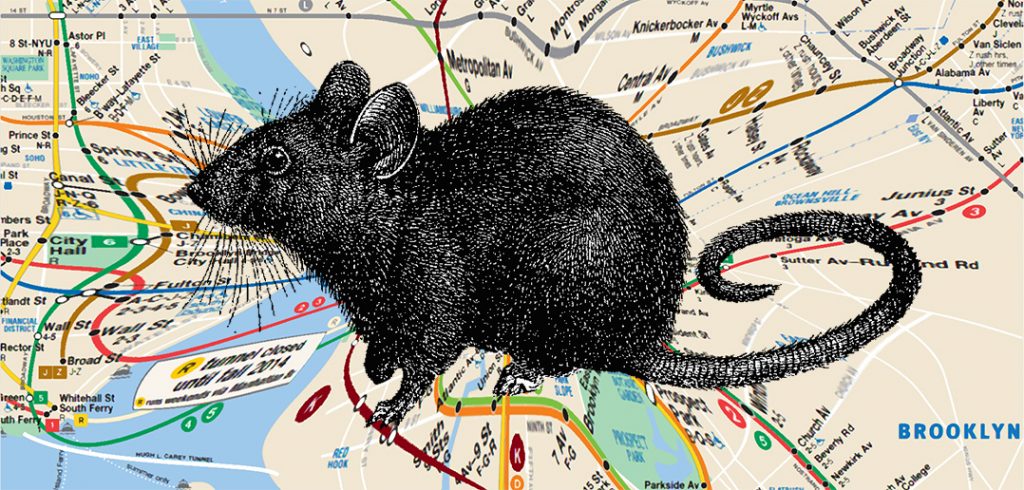Rats!
Normally such an exclamation would be a bad thing, but not for Jason Munshi-South, PhD, associate professor of biology. On April 20, the National Science Foundation awarded Munshi-South’s laboratory at Fordham’s Louis Calder Center a $600,000 grant to further study the evolution of rats in New York City.
The funding relates to his ongoing research of brown rats, also known as Norway or sewer rats—a species that can cause significant damage to human health and infrastructure. One of the major aims is to understand how rats move throughout the city, and, as a corollary, how that movement influences their genetic structure.
Munshi-South said that his research has already shown that there are genetic differences among rats in different parts of the city. His efforts were the subject of a New York Times Magazine spread this past weekend.
The new research will continue to collect rat DNA from every Manhattan zip code, as Munshi-South’s team did last summer. Biologists will then focus on differences between genomes. With this information in hand, they can then attempt to construct mapping models of how the rats move.
Other models will be based on special patterns of infrastructure, such as subway tunnels that run north and south.
By using the genetic codes, the team expects to be able to distinguish north and southbound rats from crosstown travelers. Other models will trace sewer routes and map populations in green spaces.
“We’re also going to build models based on human socioeconomic status,” said Munshi-South. “We’ve constructed the city [venues]in such a way [as to determine whether]socioeconomics may drive the way rats move around.”
The project, “Cityscape Genomics of Rats,” will also look beyond New York City. Genomic data from more than 300 rats from 25 cities will be examined to see in which ways they relate to New York City’s rats.
The city’s American Museum of Natural History has granted the team permission to extract DNA from 100-year-old rat skulls and skins to measure evolution’s hand in the game. And there is another $15,000 set aside for artists to portray the “human-rat experience.”
“Some of our work is about what makes a New York City rat a New York City rat—where did they come from, and what makes them different,” said Munshi-South. “But the greater implication is if we understand how they move, we can possibly intervene to change how they move.”
— Janet Sassi


